In herbalism (herbology or herbal medicine), the term “medicinal plant” refers to a plethora of diverse types of plants and the study and practice of using plants for therapeutic purposes.
The term “herb” is derived from the Latin word “herba”. Cognates include “hierba/yerba” in Spanish, “herbe” in French, and “herb” in English. Previously, the term was only applied to non-woody plants derived from trees and shrubs. These medicinal plants are also utilized for food, flavonoids, medicine, perfumery, and purification ceremonies. A “herb” is at present represented by any plant part, including a fruit, seed, stem, bark, flower, leaf, stigma, or root, as well as any non-woody species.
Medicinal plants are said to include a plethora of components that can be used to create pharmacopoeial, non-pharmacopoeial, or synthetic medications. Furthermore, some plants are seen as essential sources of nourishment, and as such, their therapeutic effects are promoted.
Herbs and plants can be processed and consumed in various ways, such as whole herbs, teas, syrups, essential oils, salves, ointments and capsules containing the extract of a raw herb or in pulverized or powdered form. Plant extracts range with the solvent used, the temperature at which the extract is boiled, and the duration of the extraction. Alcoholic extracts (tinctures), hot water extracts (tisanes), prolonged brewed extracts of plants, typically roots or bark (decoctions), types of vinegar (acetic acid extracts), and cold infusions of plants are all types of plant extracts (macerates).
The following will be given a short description of some of the most common herbs used that have represented a vital role in the development of human cultures worldwide. Nevertheless, the list is not confined only to these herbs and plants.
Indian pennywort, Asiatic pennywort, Gotu Kola (Centella asiatica)
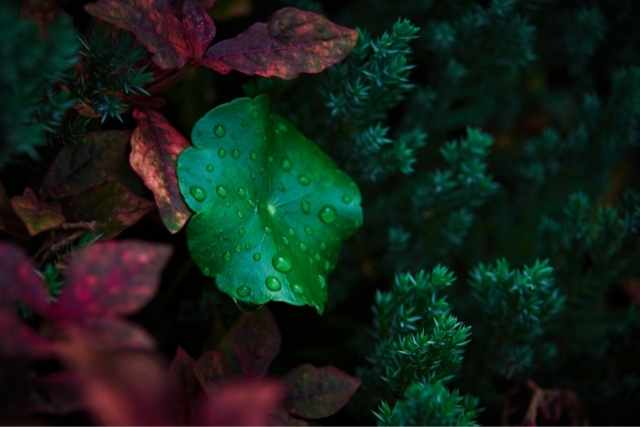
Indian pennywort is an evergreen perennial plant that belongs to the Umbelliferae family.
Native to India, it has a wide range in East Asia, including India, China, Japan, and the Pacific. It can also be found in South America, Africa, and West Pakistan.
It thrives in a variety of habitats, including old stone walls and rocky, sunny areas in lowland hills, particularly near the coast in central and southern Japan; paddy fields and grass thickets such as shady, damp areas.
Medicinal Uses
Indian pennywort is an exceptionally valuable herb that is widely used in the Orient, where it has earned its reputation as an aid to meditation under the Indian term “Brahmi,” which means “giving knowledge of the Supreme Reality” and is emerging more prominent in the West.
It contains phytoconstituents that make it a good skin-cleansing and digestive tonic. Moreover, this plant is prized in India for strengthening nerve function and memory and immunity. To name only several compounds, they are: Asiaticoside, brahmic acid, centellic acid, centellose, madecassic acid, vellarin, bayogenin, centellin, asiaticin, and centellicin.
The whole plant is a sedative, relaxant, and cardiac depressant. It is also a diuretic that clears toxins, decreases inflammations and fevers.
Besides its medicinal benefits, the leaves are edible, raw or cooked in salads and in curries or cooked as vegetables. It has an aromatic flavour with an overpowering fragrance and should be used only in small quantities.
Plant extracts are used in cosmetic masks and lotions to boost collagen production and firm the skin.
Echinacea (Echinaceae purpurea)

Echinacea is a perennial plant in the family Asteraceae ( Compositae ). It thrives in dry open woods, prairies and barrens.
It is native to N. America – Virginia to Ohio and Michigan, south to Georgia and Louisiana.
Other names include Eastern purple coneflower, Hedge Coneflower, Black Sampson, Purple Coneflower.
Medicinal Uses
North American Indians utilized the herb as a general treatment for all forms of insect bites and stings. Snakebites were treated with an infusion of the herb.
The roots and the entire plant, which have cortisone-like and antibacterial properties, are particularly useful in healing ulcers, wounds, and burns.
The plant has a general immune system stimulatory effect and is commonly employed in modern herbal medicines.
The roots and herbs of Echinacea contain alkamides, ketoalkenes, caffeic acid derivatives, polysaccharides, and glycoproteins, which are assumed to be responsible for the immunostimulatory and anti-inflammatory activities.
Echinacea is thought to be the most effective detoxifier for the circulatory, lymphatic, and respiratory systems in Western herbal therapy. Ayurvedic medicine has also adopted its use.
Ginger (Zingiber officinale)

Ginger, Popular Ginger, Cooking Ginger, Canton, Stem Ginger, and Canton Ginger are all common names for Zingiber officinale, a perennial herb with swollen underground stems or rhizomes that belongs to the Zingiberaceae family.
Turmeric (Curcuma longa), Cardamon (Elettaria Cardamomum), and other rhizomatous herbs are all members of the Zingiberaceae family.
It is widely grown in tropical locations and is said to have originated in Tropical Asia.
Medicinal Uses
Ginger root is frequently utilised in Eastern Herbal therapies; in Ayurveda, it is referred to as the universal medicine, and it is found in around half of all Ayurvedic and Chinese prescriptions.
Ginger’s health advantages are due mostly to its phenolic components, including gingerols and shogaols.
The root has a high concentration of volatile oils, gingerols, and shogaols. The shogaols are formed exclusively during the drying process of the root as a breakdown product of the gingerols. They are twice as pungent than gingerols, and as a result, the dried root is typically employed in ways that the fresh root is not.
Numerous studies have revealed that ginger possesses a variety of biological features that are beneficial for a wide variety of illnesses, including antioxidant, anti-inflammatory, antibacterial, anticancer, neuroprotective, and cardiovascular potentials. Additionally, it has anti-inflammatory, anti-obesity, anti-diabetic, antinausea, antiemetic, and anti-cold, abdominal chills, and peripheral circulation problems qualities. Additionally, it aids in digestion and liver function.
Externally, the root is used to treat spasmodic discomfort, rheumatism, lumbago, menstrual cramps, and sprains.
Furthermore, the rhizome is used to flavor beverages and foods. The fresh root is almost twice as pungent as the dried root. Young, mildly peppery leaves and shoots can be eaten raw or pureed and used in sauces and dips. The root’s essential oil is used to flavor essences.
Milk thistle (Silybum marianum)
Silybum marianum is a biennial plant in the Asteraceae family.
It is usually found thriving in waste places, usually close to the sea, especially if the ground is dry and rocky. The plant is native to
S. Europe, N. Africa and W. Asia. Naturalized in Britain.
Medicinal Uses
Milk thistle is a medicinal plant that has been in use for more than 2,000 years. Its long history of use in the West secured its reputation as a remedy for depression and liver problems. Recent studies have validated its amazing capacity to protect the liver from damage caused by alcohol and other types of poisoning.
Silymarin, a seed extract, acts on the membranes of the liver cells, preventing virus poisons and other harmful substances from entering and therefore reducing cell damage.
Constituents of the fruits include silymarin flavonolignans, the main component of silybin (also known as silibinin). Clinical trials have focused on the pharmacokinetics and bioavailability of Milk thistle for liver-regenerating properties as well as anti-inflammatory, immunomodulating, antioxidant, and antifibrotic properties, implying a potential application in patients with nonalcoholic fatty liver disease and alcoholic liver disease.
The whole plant possesses astringent, bitter, cholagogue, diaphoretic, diuretic, emetic, emmenagogue, hepatic, stimulant, stomachic, and tonic qualities.
Additionally, the roasted seeds can be used as a coffee substitute. The seeds are also utilized to extract high-grade oil.
Chamomile, Roman Chamomile (Chamaemelum nobile)
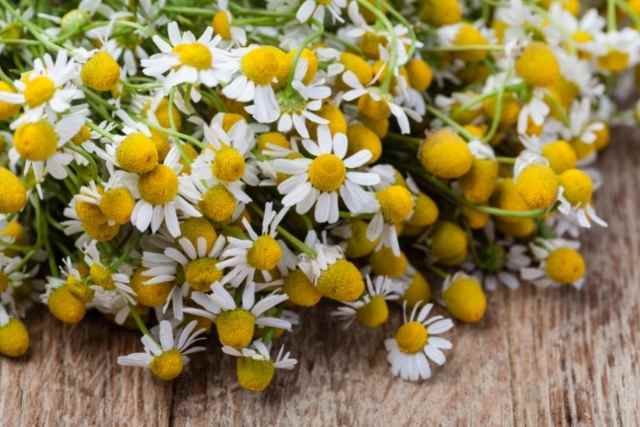
Chamomile is a perennial evergreen indigenous to Western Europe, including the United Kingdom, from Belgium south to N. Africa and the Azores. It belongs to the Asteraceae family. It favors sandy commons, meadows, and grassy roadside vegetation. It is in bloom from June to July, but it remains in leaf all year.
There are two types of Chamomile: Roman Chamomile and German Chamomile (Matricaria recutita).
The most reputed for its use is the Roman Chamomile (Chamaemelum nobile), sharing the same phytoconstituents, although the German Chamomile has a higher concentration of essential oil chamazulene.
Other species include Moroccan Chamomile (Anthemis mixta), Cape chamomile (Eriocephalus punctulatus), and Pineapple weed (Matricaria discoidea).
Medicinal Uses
Chamomile is one of the world’s oldest therapeutic plants with a long history of safe and efficient medicinal usage, and it is commonly used as a home remedy. It is beneficial as a digestive system cure, sedative and nervine and is especially suitable for small children.
The blooms are used to make tea, which should be prepared in a covered vessel to prevent the essential oils from escaping. Its properties are Anodyne(painkilling), anti-inflammatory, antispasmodic, nervine, stomachic, tonic.
The herb and infusion include flavonoids and phenolic acids, and organic acids, all of which have antioxidant and anticancer activities without causing hepatotoxicity. In clinical trials, the most abundant components of plant extracts and infusions are 5-O-caffeoylquinic acid and an apigenin derivative that have revealed antioxidant and antitumor activities.
The entire herb is used to obtain a lotion for local use in the treatment of toothache, earache, and neuralgia, among other conditions. In Aromatherapy, the essential oil is employed as a soothing aid. The essential oil is also used in perfumery and as a flavoring agent.
Burdock (Arctium lappa)
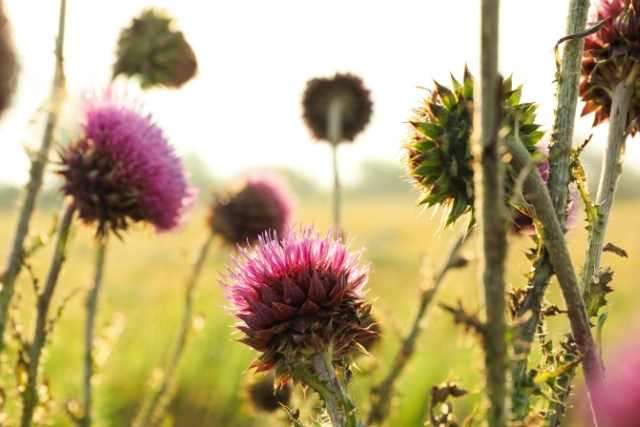
Burdock, another Asteraceae family member, is a biennial plant that grows in waste ground and prefers calcareous soils; it can also be found in meadows and woods.
It is found throughout most of Europe, including the United Kingdom, and extends east to northern Asia.
Medicinal Uses
Burdock is recognised to be one of the most effective detoxifying herbs in both traditional Chinese and Western herbal treatment.
The dried root of one-year-old plants is the official medicine, but the leaves and fruits can also be utilized. It’s used to cure disorders including throat and other infections, boils, rashes, and other skin problems that are caused by a toxic overload. The root is considered to be particularly helpful in the removal of heavy metals from the body.
Bioactive components derived from Burdock have piqued the interest of researchers over the past several decades due to their potential therapeutic properties. Two primary active compounds arctigenin (AR) and its glycoside, arctiin are the most active substances in A.lappa.
It has antibacterial and antifungal properties, as well as carminative properties. It contains soothing, mucilaginous characteristics and is widely recognised as a valuable therapy for various skin conditions, burns, and bruises. It is used to treat herpes, eczema, acne, impetigo, ringworm, boils, bites, and a variety of other skin conditions. The herb can be used as an infusion or used externally as a skin cleanser.
When used topically, the juice of the Burdock plant is claimed to have a stimulating effect on baldness.
Garlic (Allium sativum)

Allium sativum refers to cultivated garlic and not to Allium ursinum (wild garlic); therefore, it is not common in wild habitats.
Its origins are most likely in Central Asia or maybe northeastern Iran.
Allium sativum is a widely used bulb in the Alliacea (Amaryllidaceae) family. It is an aromatic herbaceous plant that is mostly used in southern Europe as a flavouring in a wide variety of raw and cooked meals. Garlic is an incredibly nutritious and health-promoting food, but because of its strong flavour, it is typically used in very little amounts as a flavouring in salads and cooked foods.
Medicinal Uses
Numerous illnesses, ranging from ringworm to Candida and vaginitis, have been treated with garlic due to its fungal, antiseptic, tonic, and parasiticidal characteristics. This herb, which possesses exceptional germicidal properties, is effective at preventing amoebic dysentery. Furthermore, it is believed to have anticancer properties. Likewise, garlic has been demonstrated to assist in the elimination of lead intoxication.
Numerous sulphur compounds have been identified in raw garlic and its converted derivatives, which are employed in a wide variety of applications.
Sulfur-containing phytoconstituents such as alliin, allicin, ajoenes, vinyldithiins, and flavonoids such as quercetin are abundant in Allium sativum.
Nevertheless, a vast field of clinical studies indicates that garlic improves glucose metabolism for diabetes, slows the progress of arteriosclerosis, and reduces the incidence of recurrent heart attacks in myocardial infarct patients. The plant’s extract can be used as a fungicide. The juice is an exceptional antibacterial for treating wounds externally.
Fresh bulbs are significantly more medicinally effective than preserved bulbs; prolonged storage greatly diminishes the antibacterial effectiveness.
Conclusion
The World Health Organization (WHO) approximates that around 80% of people worldwide use herbal medicines concerning general aspects of their primary health care. Over 21,000 plant species have the potential to be used as medicinal plants, according to the WHO.
Whereas most medicinal plants are harmless when used correctly according to customary ways, others are poisonous by origin. In addition, improper use (wrong plant parts, dose, frequency, mode of administration, preparation, etc.) or misuse might result in negative outcomes.


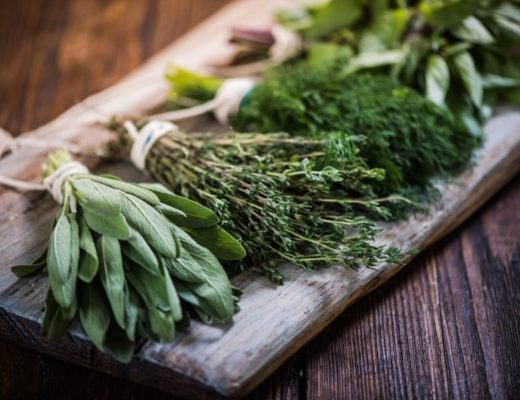

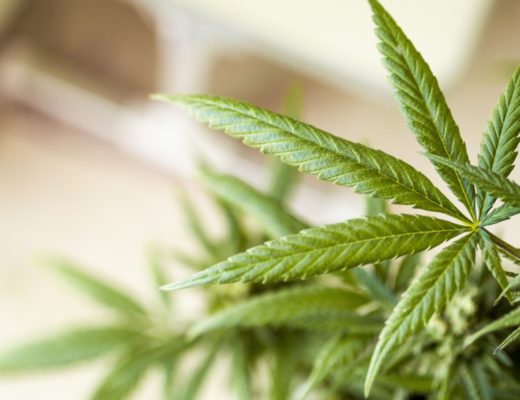
No Comments